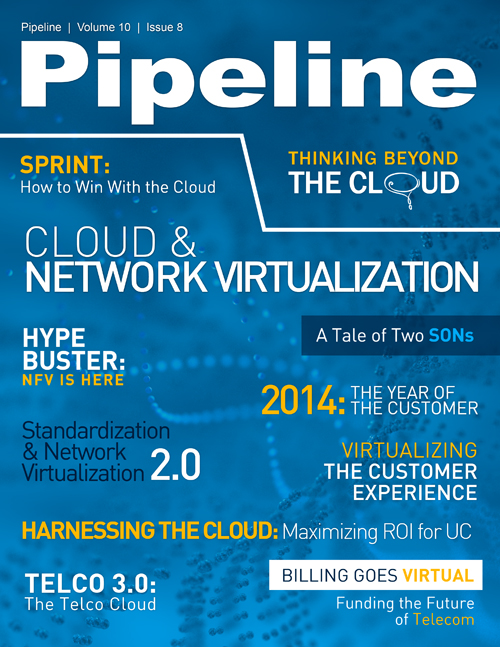LTE, Virtualization and the Customer
By: Phil Twist

For the last year the telecom industry has largely been in a holding pattern, with incremental developments slowly building toward a larger, mainstream transition to new technologies. This punctuated equilibrium has paved the way for 2014, when we expect to see significant changes that will characterize the next stage of development in telecom. A few trends, in particular, promise to define the next year: Telco Cloud, VoLTE and TD-LTE, and CEM (customer experience management).
Telco Cloud
Mobile broadband operators face both a myriad of challenges and exciting new opportunities to build profitability. Traffic growth continues almost unbounded, demanding new network capacity; yet traffic patterns are increasingly unpredictable. This was starkly demonstrated in September 2013 when Apple released its iOS 7 operating system. Within a few hours, 130 million people had updated their devices, doubling the data demand on some ISPs around the world. Furthermore, the effect of new services such as Ultra HD video and machine-to-machine services on future traffic volume and patterns cannot be predicted.
At the same time, providing a great network experience for subscribers is extremely important and will become critical as a principal driver of revenue.
To meet these needs, operators require extreme flexibility in their network and operations to satisfy their customers by responding with rapid time-to-market (TTM) performance. In parallel, they need to see a drastic reduction in their total ‘production’ cost per bit.
The Telco Cloud has the potential to help operators meet all of these needs. The benefits are similar to those in the IT environment, namely lower capital and operational costs and increased business agility. While cloud solutions are transforming businesses at every level, letting them rapidly deploy cost-effective services on demand, deployment has been somewhat lagging in the telecom industry. This is namely due to ensuring telco-grade performance and robustness of these solutions can reach the necessary levels.
With further development of the cloud, more and more operators are looking to migrate from telecoms-specific solutions to general purpose cloud platforms.
Why are operators implementing Telco Cloud?
We’ve outlined the benefits, but what is actually driving operators to look into Cloud and Virtualization? The keyword is efficiency. We all know how quick the demand for mobile data is growing, and we can safely state there is no change in sight for this trend. In a traditional approach, making the network capacity grow to meet this demand is not that easy, nor quick. One very good example involves the packet core. Nowadays, if we run out of capacity we have to install new nodes and do all the integration, etc., in an expensive and time-consuming process. And this is valid not only for data throughput capacity, but also for signaling which, in the case of mobility, can be an even bigger problem than just throughput. It is clear that, for operators, there must be a better way to address this. Network functions virtualization (NFV) is the answer.
Nokia Solutions and Networks (NSN) is innovating in several key dimensions of the Telco Cloud, which include NFV as well as software-defined networking (SDN), enabling us to help operator customers move from the virtualization of single network elements to full cloud orchestration, including cloud application management. The approach, based on NSN Liquid Net, will enable mobile networks to support several cloud stacks simultaneously, achieving maximum flexibility while protecting investments.
NFV
The virtualization of service and control functions in the core network has been a first step in using cloud computing technology in the telco domain. However, for a full telco cloud implementation, virtualization needs to be complemented with a complete cloud platform and management system. This must include classical network management for legacy systems, plus virtualized network function, cloud orchestration and application management to achieve the full benefits of automated provisioning and elastic scaling of the network.
NSN’s approach is independent of hardware and cloud technology. This enables virtualized core network functions and their management to support several cloud stacks, including the current OpenStack and VMware vCloud Suite. As other cloud stack vendors become relevant for the telco industry, this cloud-agnostic approach will ensure they are supported.



















